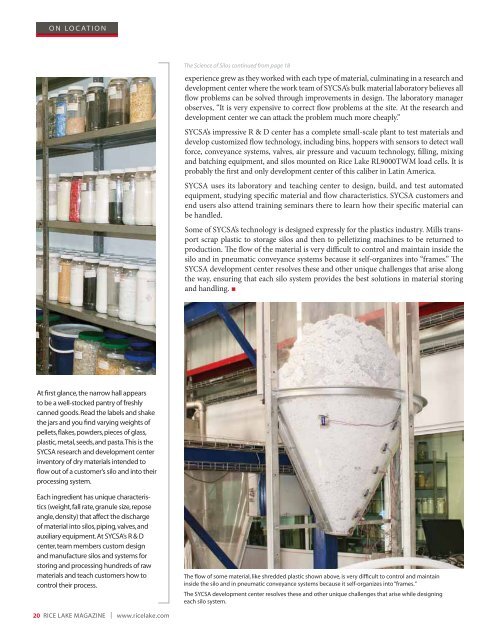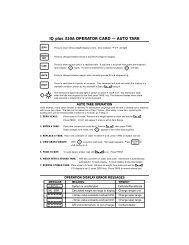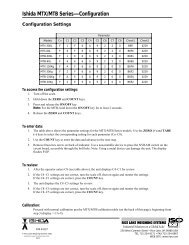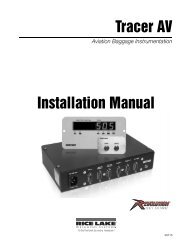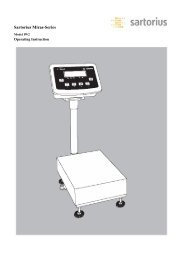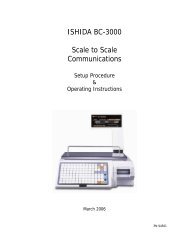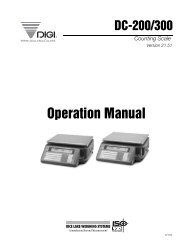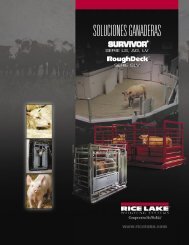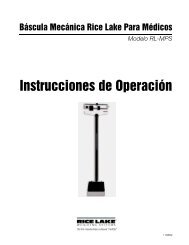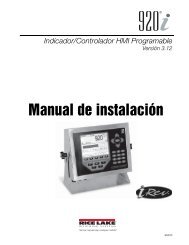English - Rice Lake Weighing Systems
English - Rice Lake Weighing Systems
English - Rice Lake Weighing Systems
You also want an ePaper? Increase the reach of your titles
YUMPU automatically turns print PDFs into web optimized ePapers that Google loves.
ON LOCATION<br />
The Science of Silos continued from page 18<br />
experience grew as they worked with each type of material, culminating in a research and<br />
development center where the work team of SYCSA’s bulk material laboratory believes all<br />
flow problems can be solved through improvements in design. The laboratory manager<br />
observes, “It is very expensive to correct flow problems at the site. At the research and<br />
development center we can attack the problem much more cheaply.”<br />
SYCSA’s impressive R & D center has a complete small-scale plant to test materials and<br />
develop customized flow technology, including bins, hoppers with sensors to detect wall<br />
force, conveyance systems, valves, air pressure and vacuum technology, filling, mixing<br />
and batching equipment, and silos mounted on <strong>Rice</strong> <strong>Lake</strong> RL9000TWM load cells. It is<br />
probably the first and only development center of this caliber in Latin America.<br />
SYCSA uses its laboratory and teaching center to design, build, and test automated<br />
equipment, studying specific material and flow characteristics. SYCSA customers and<br />
end users also attend training seminars there to learn how their specific material can<br />
be handled.<br />
Some of SYCSA’s technology is designed expressly for the plastics industry. Mills transport<br />
scrap plastic to storage silos and then to pelletizing machines to be returned to<br />
production. The flow of the material is very difficult to control and maintain inside the<br />
silo and in pneumatic conveyance systems because it self-organizes into “frames.” The<br />
SYCSA development center resolves these and other unique challenges that arise along<br />
the way, ensuring that each silo system provides the best solutions in material storing<br />
and handling. ▪<br />
At first glance, the narrow hall appears<br />
to be a well-stocked pantry of freshly<br />
canned goods. Read the labels and shake<br />
the jars and you find varying weights of<br />
pellets, flakes, powders, pieces of glass,<br />
plastic, metal, seeds, and pasta. This is the<br />
SYCSA research and development center<br />
inventory of dry materials intended to<br />
flow out of a customer’s silo and into their<br />
processing system.<br />
Each ingredient has unique characteristics<br />
(weight, fall rate, granule size, repose<br />
angle, density) that affect the discharge<br />
of material into silos, piping, valves, and<br />
auxiliary equipment. At SYCSA’s R & D<br />
center, team members custom design<br />
and manufacture silos and systems for<br />
storing and processing hundreds of raw<br />
materials and teach customers how to<br />
control their process.<br />
The flow of some material, like shredded plastic shown above, is very difficult to control and maintain<br />
inside the silo and in pneumatic conveyance systems because it self-organizes into “frames.”<br />
The SYCSA development center resolves these and other unique challenges that arise while designing<br />
each silo system.<br />
20 RICE LAKE MAGAZINE | www.ricelake.com


